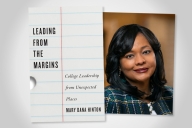You have /5 articles left.
Sign up for a free account or log in.
Cambridge University Press
More than 140 U.S. institutions have now signed open-access deals with Cambridge University Press, marking a significant shift in strategy for the nonprofit publisher.
At the end of 2020, just 13 U.S. institutions had so-called read-and-publish deals with the Cambridge University Press. The University of California system, which was the first U.S. institution to sign a read-and-publish deal with Cambridge University Press, accounted for nine of those 13 deals.
The publisher announced today that it struck read-and-publish deals with another 129 U.S. institutions in the first few months of 2021 -- signaling a rapid adoption of the model. The institutions include state university systems, liberal arts colleges and major research institutions.
Under the read-and-publish model promoted by Cambridge University Press, institutions take funds they previously spent on journal subscriptions and repurpose them to support open-access publishing.
Open-access publishing makes articles available for anyone to read, either immediately or after an embargo period. Different open-access tiers come with different charges and restrictions on article availability. One tier has colleges, universities, libraries or researchers paying to have their articles published and made widely available, which is different from the traditional publishing model, where subscribers pay to access journals.
The growth of Cambridge University Press's read-and-publish model comes in response to moves by major research funders in Europe to mandate the open publication of research they support. It is becoming clear that many publishers want to promote the tier of open-access publishing that has institutions paying for the widest article availability -- a direction that some critics have said could create new barriers to publishing research, particularly for academics at institutions with low levels of financial resources.
Cambridge University Press has a goal of making all research published in its catalog of 400 journals fully open access by 2025, said Kellie O’Rourke, head of library sales for the Americas at the publisher.
At an open-access publishing forum hosted by the University of California system in 2019, O’Rourke said that she and her colleagues had “embraced an open research future” but weren’t sure how best to get there.
It is now clear that Cambridge University Press believes the way forward is through read-and-publish deals. A team of staff at the publisher presented this model to 250 U.S. institutions during the 2021 renewal season, with 129 institutions ultimately choosing to move forward with the model, said O'Rourke. Many of those that chose not to move forward cited the unique challenges of the pandemic as their reason for not opting in right now, but were interested to keep discussions going, she said.
"We baked read-and-publish into our renewal conversations,” O’Rourke said. “We spent a lot of time simplifying the offer and the message. We tried to make it clear that this is not going to add more cost to the system or place [administrative] pressure on libraries.”
The read-and-publish model is new to many of the institutions that have partnered with Cambridge University Press, O’Rourke said. It is unusual for a publisher to be presenting this model to librarians, rather than librarians specifically requesting the model, she said.
“We had a lot of questions about what this would mean for the library and whether this would be an extra burden for them,” O’Rourke said. “Quelling those concerns was a big part of our work.”
The read-and-publish model will allow for U.S. researchers to benefit from open access, despite a lack of funding, said O'Rourke. "The benefits of making research open access are clear for authors: the impact, usage and number of citations of their research will grow," she said.
With 140 U.S. institutions now signed up, approximately 25 percent of the research that is authored by researchers at U.S. institutions and published by Cambridge University Press or associated society-owned journals will now be published openly with no additional cost to the researcher or the institution, O’Rourke said.
In Europe, many institutions have already adopted the read-and-publish model in response to an open access initiative led by European research funders called Plan S, O’Rourke said. At European institutions where Cambridge University Press has read-and-publish agreements in place, an average of 70 percent of authors publishing in its journals are now choosing to publish their work openly.
Without comprehensive open access mandates, there is a risk that researchers in the U.S. "will not have a viable pathway to an open access future if we don't work together toward building it," said O'Rourke.
Authors will not be required to publish their work openly, but it will be encouraged, said Rachel Scott, associate dean for information assets at Illinois State University’s Milner Library, which recently signed its first read-and-publish deal with Cambridge University Press.
Previously, relatively few works by Illinois State authors were published in Cambridge University Press journals, she said. With open publishing costs now taken care of, Scott hopes more authors will consider publishing in these journals to expand public access to their work.
Outreach efforts to inform authors about the read-and-publish deal with Cambridge University Press are just beginning in the University of Texas system, said Alexia Thompson-Young, assistant director of scholarly resources for the University of Texas at Austin and the UT System Digital Library.
The UT system also recently signed its first read-and-publish deal with Cambridge University Press and was eager to pursue an arrangement where there was no cap on how many authors could publish openly each year, Thompson-Young said. UT system authors have published an average of 70 articles per year in Cambridge University Press journals over the last three years.
An unlimited deal is much easier to manage and creates a much fairer system for UT authors, Thompson-Young said. She added that she didn't want to be in the position of choosing who gets to publish their work openly, and who doesn't.
Thompson-Young and Scott each said they were unable to share the cost of their institution's read-and-publish deal with the publisher. They would only say that they were pleased with their agreements and happy to support open-access publishing. Most of the read-and-publish deals recently signed by Cambridge University Press and U.S. institutions will run for three years, said O'Rourke.
The fact that Cambridge University Press is a nonprofit publisher with many read-and-publish deals under its belt was a comfort to both Scott and Thompson-Young. Both indicated that they would be much more hesitant about entering into a pilot with a for-profit publisher that has not clearly articulated its open-access strategy.
Read-and-publish deals are just one of many open-access strategies, said Nick Shockey, director of programs and engagement at SPARC, a nonprofit that supports the open publication of educational and research materials, supports library negotiations with publishers, and tracks cancellation of bundled journal subscription packages, also known as big deals.
While it is notable that so many institutions have signed up for read-and-publish deals with Cambridge University Press, the publishing landscape is unlikely to settle on just one model.
“We’re seeing a lot of emphasis on libraries negotiating in line with their values,” Shockey said. “In the shift toward open that's happening, more and more libraries are really starting to think carefully about what they want to see in the future, and not repeating the problems caused by big deals."
The Massachusetts Institute of Technology, for example, has drawn up a framework for negotiating with publishers that aims to make all research freely and immediately available for anyone to access, read, and use without restriction for any lawful purpose. The framework is supported by dozens of institutions and library organizations.
While the MIT framework supports immediate open access publication, it does not necessarily align with the read-and-publish model. Chris Bourg, director of MIT Libraries, and Roger Levy, an associate professor and chair of the Faculty Committee on the Library System, recently wrote that they had concerns about agreements such as the University of California's read-and-publish deal with Springer Nature becoming the norm.
One of the primary concerns about read-and-publish deals is that in the long term, the “barriers currently imposed on readers will be erected for authors instead,” said Jefferson Pooley, professor of media and communication at Muhlenberg College.
“There is an obvious momentum for read-and-publish deals, and for better or worse -- I think worse -- it’s becoming clear this is the strategy that publishers are employing in response to Plan S,” Pooley said.
While read-and-publish deals might work fine for wealthy U.S. institutions, they are not as likely to work well for institutions that don’t have strong library budgets.
“I think the result in the U.S. and in the world will be the creation of an authorial underclass -- people who don’t have access to authorship in journals because their institutions didn’t have a subscription deal in the first place that they could transition into a read-and-publish deal,” said Pooley.
“It strikes me as Pyrrhic victory if open access comes at the cost of erecting new barriers to authorship,” he said.








